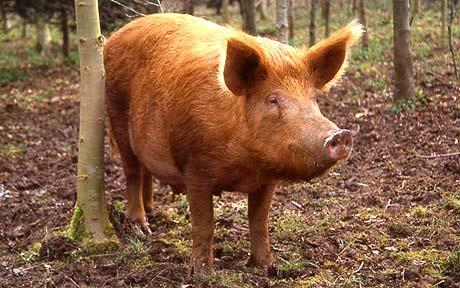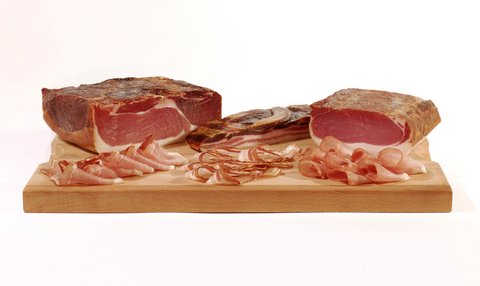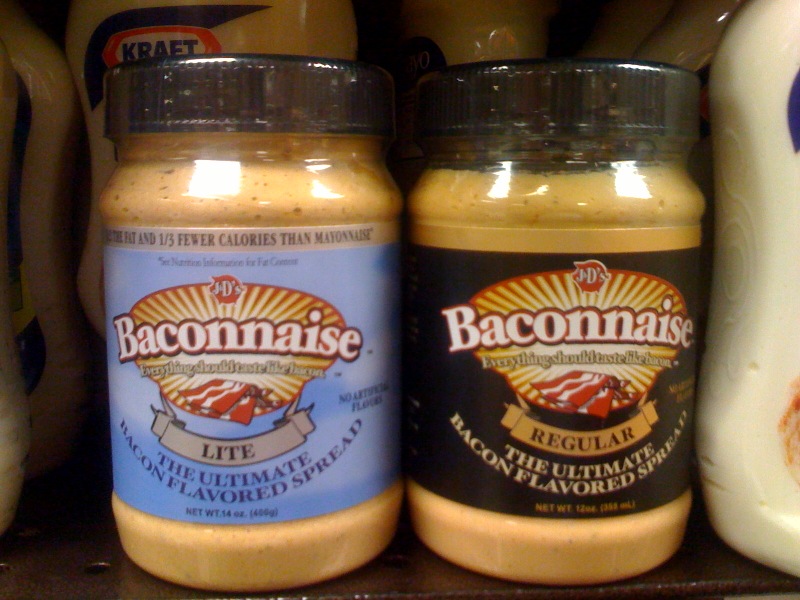A Quick History of Bacon
 A quick thank you to all the pigs out there, for your service.Pigs weren’t always the domesticated and farm-raised animals that we are familiar with today; modern pigs all originally came from several different populations of wild pigs in Europe and Asia. People hunted wild boar and their meat became very sought after but dangerous to obtain because of their teeth and tusks. At around the same time in Asia and Europe, people began to tame pigs and use salt to cure the meat (including the pork belly) so that it could last longer and this cured pork could arguably be referred to as the foundation for what we call bacon today.
A quick thank you to all the pigs out there, for your service.Pigs weren’t always the domesticated and farm-raised animals that we are familiar with today; modern pigs all originally came from several different populations of wild pigs in Europe and Asia. People hunted wild boar and their meat became very sought after but dangerous to obtain because of their teeth and tusks. At around the same time in Asia and Europe, people began to tame pigs and use salt to cure the meat (including the pork belly) so that it could last longer and this cured pork could arguably be referred to as the foundation for what we call bacon today.
Another early variation of bacon came from Ancient Rome and was called “petaso”. Petaso was made by boiling the pork with figs and then searing it in a fire and seasoning it with a pepper sauce. A great pairing.. there are still quite a few ‘pig and fig’ dishes out there that I’ve had at restaurants and gastropubs.
Let’s jump to the Middle Ages in England. Lots of food historians believe that farmers raising pigs in this period of time may have begun to notice that some pigs had meatier sides than others. They would have bred these pigs to continue that trend because there have been accounts of a cut of pork belly and pork loin that was cured and eaten (the closest resemblance yet to modern day bacon) by the people at that time. This ends up being more like what we call ‘back bacon’. This is a leaner cut, wet or dry cured, that is not smoked and is still quite popular today in England.
(Listen to the Retrospectical Podcast Episode 06 all about bacon, including an interview with Baconfest Chicago co-founder, Seth Zurer)
A few hundred years afterward, peasants in Europe began to smoke the bacon, roughly following the same set of preparations that we do today. After acquiring some good quality cured pork bellies, they must be dried completely so that a pellicle (coating of proteins) forms over the meat. This is so the meat will absorb the smoke better and not dry out the insides. Then the pork bellies are smoked – generally for a long period of time at a relatively low temperature. At this point, they can be sliced to whatever thickness is preferred and cooked.
Back in the 17th and 18th centuries in England, nearly everyone owned pigs and had their own secret recipes for bacon (city dwellers were even allowed to keep pigs in their basements for those purposes until that was made illegal in the 1930’s). Obviously more of the bacon came from local farms and butchers but regardless, this explosion of such a variety of different kinds of bacon, sausage and other pork products must have been something to behold.
Toward the end of the 18th century, a bacontrepeneur named John Harris pioneered a new way of curing pork bellies in a brine that proved to be both quicker and more cost-effective. This started the bacon revolution full force, with hundreds of companies forming thereafter using his techniques or similar to get low-cost bacon out to the masses. This should be looked at as a compromise, however, as it is more than likely that the ‘craft’ dry-cured bacon that was previously being made by the people was much tastier and also higher quality product.
What Different Kinds of Bacon Are There?
 All the bacons.. MMmmMMmmMM..Side bacon, or streaky bacon, comes from pork belly. It is very fatty with long layers of fat running parallel to the rind. This is the most common form of bacon in the United States. Pancetta is Italian streaky bacon, smoked or un-smoked, with a strong flavor. It is generally rolled up into cylinders after curing.
All the bacons.. MMmmMMmmMM..Side bacon, or streaky bacon, comes from pork belly. It is very fatty with long layers of fat running parallel to the rind. This is the most common form of bacon in the United States. Pancetta is Italian streaky bacon, smoked or un-smoked, with a strong flavor. It is generally rolled up into cylinders after curing.
Middle bacon, from the side of the animal, is intermediate in cost, fat content, and flavor between streaky bacon and back bacon.
Back bacon (rashers, or, in the United States, Canadian bacon) comes from the loin in the middle of the back of the pig. It is a very lean, meaty cut of bacon, with less fat compared to other cuts. It has a ham-like texture. Most bacon consumed in the UK is back bacon.
Cottage bacon is thinly sliced lean pork meat from a shoulder cut that is typically oval shaped and meaty. It is cured and then sliced into round pieces for baking or frying.
Jowl bacon is cured and smoked cheeks of pork.
Slab bacon is side bacon that is not sliced. It generally has the rind still intact, and usually has a medium to very high fraction of fat. It is made from the belly and side cuts, and from fatback. Slab bacon is not to be confused with salt pork, which is prepared from the same cuts, but is not cured.
(Click on the picture for a full-size version that you can actually read!)
5 Interesting Facts About Bacon
 Bet you thought Baconnaise contained bacon.. think again!Bacon Explosion is one of the most popular dishes in the world after it went viral on the internet several years ago.. The Bacon Explosion is made of bacon, sausage, barbeque sauce and barbeque seasoning or rub. The bacon is assembled in a weave to hold the sausage, sauce and crumbled bacon. Once rolled, the Bacon Explosion is cooked, basted, cut and served.
Bet you thought Baconnaise contained bacon.. think again!Bacon Explosion is one of the most popular dishes in the world after it went viral on the internet several years ago.. The Bacon Explosion is made of bacon, sausage, barbeque sauce and barbeque seasoning or rub. The bacon is assembled in a weave to hold the sausage, sauce and crumbled bacon. Once rolled, the Bacon Explosion is cooked, basted, cut and served.
- Bacon is addictive – not just because of how good it is! It contains large amounts of glutamate, which actually produces stimulates the umami receptors in the brain and gives us a specific savory taste and lasting sensation. Interesting stuff.. other foods known to have this effect include: beef, potatoes, parmesan cheese and shellfish. Yum!
- A bacon sandwich really does cure a hangover: "Bread is high in carbohydrates and bacon is full of protein, which breaks down into amino acids. Your body needs these amino acids, so eating them will make you feel good." "Bingeing on alcohol depletes neurotransmitters too, but bacon contains a high level of aminos which tops these up, giving you a clearer head." Researchers also found a complex chemical interaction in the cooking of bacon produces the winning combination of taste and smell which is almost irresistible.
- Baconnaise is vegetarian.. yup. Believe it or not, they mock this dressing up to taste just like the real thing but it actually contains none of it!
- 70% of bacon in the U.S is eaten at breakfast time. This may seem perfectly reasonable, but it didn’t start off this way. In fact, it’s really pretty much only due to the meddling of Sigmund Freud’s nephew.. who - to no great surprise - was skilled in psychology, and therefore advertising. Mr. Edward Bernays. He, through a Beech-Nut Packing Company ad campaign (they manufactured a lot of pork products among other things), convinced the American public that a heavier breakfast (bacon and eggs, specifically) would be beneficial. This was backed up by some of his friends in the medical industry through a study that was performed. Immediately during and after the campaign, bacon became a huge part of the traditional American breakfast.








 Please wait...
Please wait...